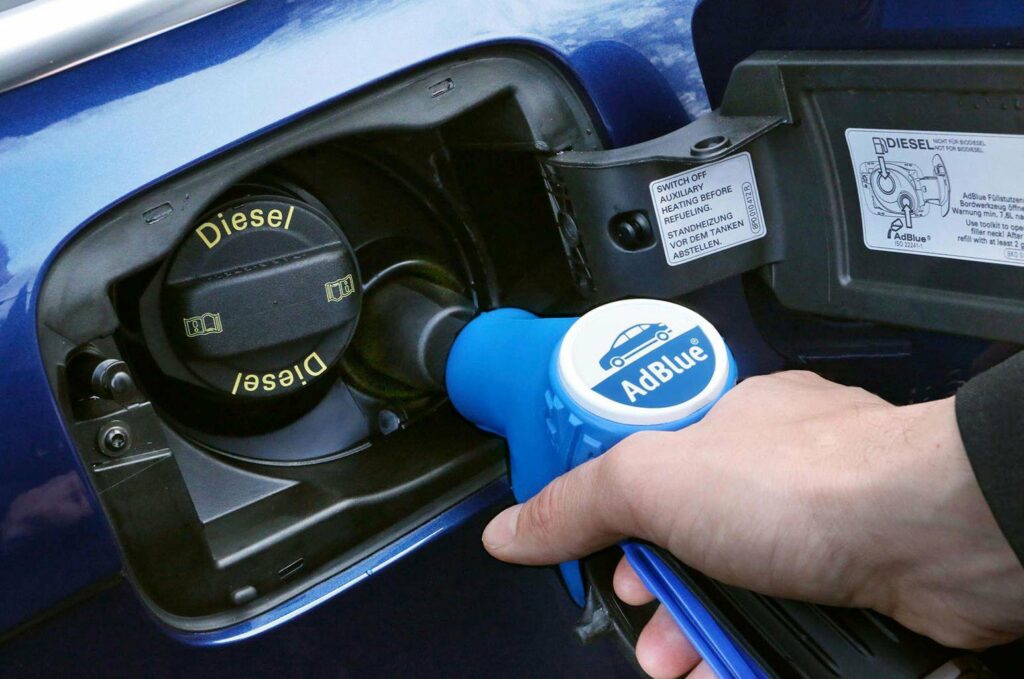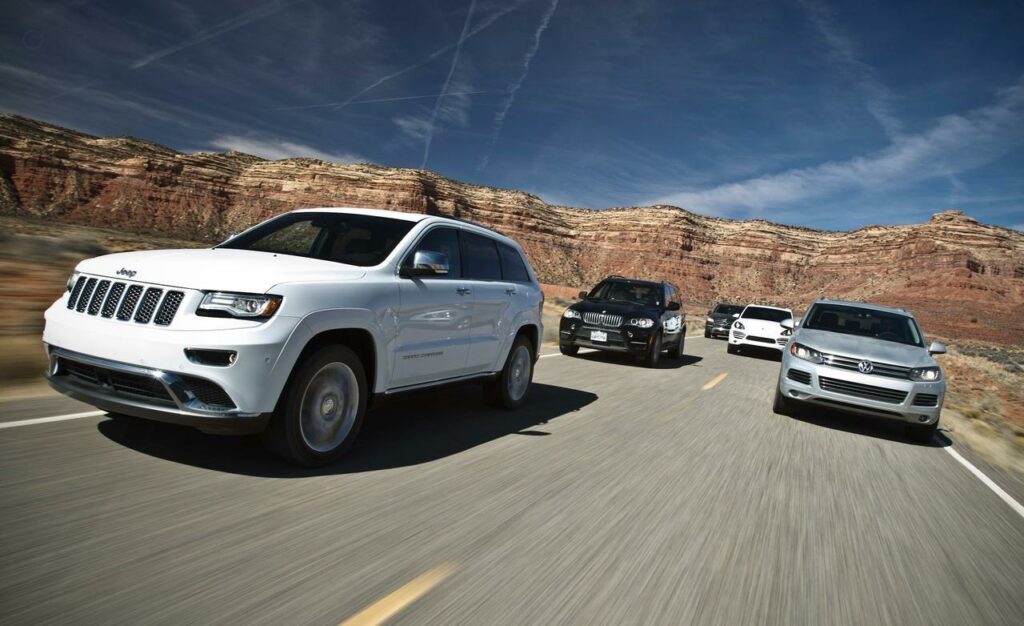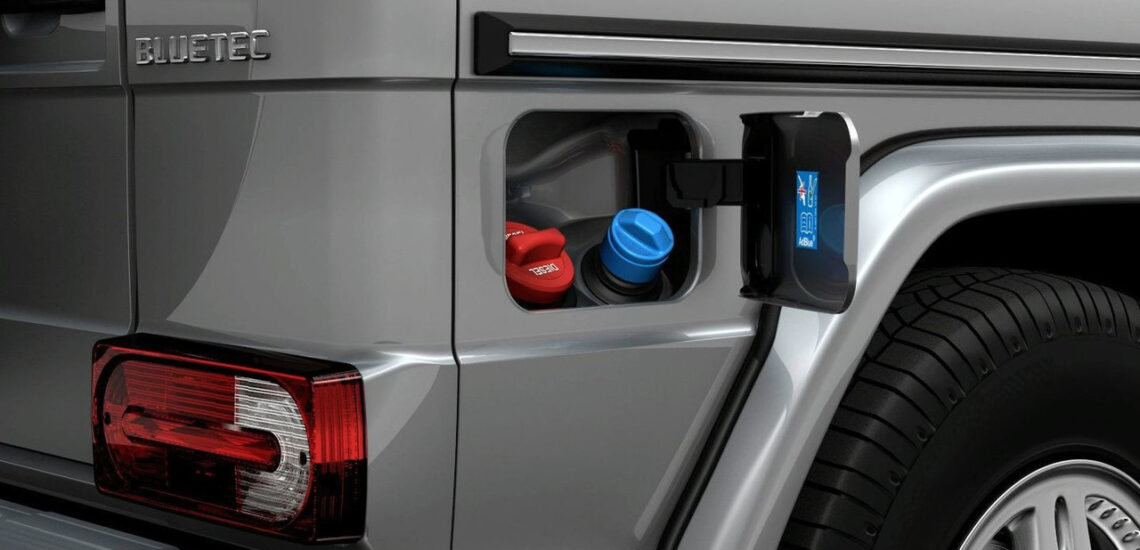Developers resort to any trick in order to increase the environmental friendliness of their cars. They play with solar panels, electric and hybrid drives, tinker with hydrogen technologies. Many of these developments leaked onto the assembly line, and some remained to live out their lives, being embodied only in prototypes. And, by the way, the Bluetec technology that Mercedes-Benz uses on its diesel cars, although not revolutionary, cleans exhaust gases properly.
It’s a sin to question the effectiveness of this system. Judge for yourself, thanks to its application, engineers, without changing the design of engines that comply with Euro-3 standards, managed to achieve the level of emissions which, by terms of nitrogen oxides content, fit into Euro-5 and even Euro-6 standards with a large margin, with minimal reconfigurations of fuel equipment. So how does this technological wonder work?
Many modern cars have three-way catalysts. They are relatively simple, not too expensive to produce, quite durable and, we must say, do their job very well. In such catalysts, platinum and palladium “fight” with CO (carbon monoxide) and CH (hydrocarbons), and rhodium “fights” with NO (nitrogen oxides). Without going into details, the result of the “gas mask’s” work is the oxidation or reduction of these toxic components to carbon dioxide CO2, nitrogen N2 and water. And while developers learned to fight very effectively with the malicious “trinity”, chemists faced some problems when cleaning the exhaust of diesel engines.
Everything would be fine, but the features of mixing in a diesel engine are such that when it works, not only the listed harmful components are released, but also a large amount of soot, which, by the way, is a “provocateur” of the growth of cancer cells. And that’s not all! The peculiarity of diesel engines is that if you reduce the proportion of soot in the exhaust, the NOx content, on the contrary, will begin to increase sharply. And vice versa. Moreover, a bias towards one direction or another depends not only on the perfection of the mixing process, but also on the operating mode.
So it turns out that a much more complex system consisting of several components is needed for an integrated cleaning of diesel exhaust. And, we must say, quite a lot of such systems were released – Toyota, Citroen, and Mitsubishi experimented with them. There are some very interesting instances among them, but, unfortunately, in most cases they resemble hydrolysis plants of an oil refinery in terms of their complexity. They are not only bulky and heavy, but also expensive to such an extent that profitability calls into question their use in mass production.
Although, it should be noted, it was possible to find a solution for soot relatively quickly and, most importantly, cheaply. Chemical engineers have created a special storage particulate filter, which can be seen today on a large number of modern diesel engines. CO and CH on these motors are effectively defeated with the help of conventional oxidation catalysts. But what about NOx? Its amount can increase so much under certain operating modes of a diesel engine that it becomes very problematic to fit it into Euro-4, and, moreover, Euro-6 norms.
The answer was given by the specialists of Mercedes with their Bluetec technology. It is this exhaust cleaning system, which turned out to be the simplest and most successful among its own kind, that allowed diesel engines to be fitted into promising ultra-strict toxicity standards on all counts, including nitrogen oxides. However, not everyone knows that not one, but three subtypes of the system, which differ very much, are used under the Bluetec sign on Mercedes and Chrysler cars. But first things first.
First, DaimlerChrysler launched a series of cars with a system that involved the injection of the AdBlue artificial urea into the exhaust port. The concern released prototypes with the Bluetec urea technology on the road in 2002. For several months, testers drove the cars on the roads of Europe and America before they realised that the system was capable and could be used on production cars. Already at the beginning of 2005, the concern’s serial diesel trucks were equipped with such systems. Then the technology slowly moved to buses. And not so long ago, they were joined by passenger cars, for example, the Mercedes-Benz GL SUV or the Mercedes E 320 CDI Bluetec.

The truck version of Bluetec is the simplest and works as follows: a special active reagent AdBlue, which is an aqueous solution of urea (water + ammonia), is fed into the exhaust port and mixed with exhaust gases. Then this wild mix gets into a special catalyst SCR (Selective Catalytic Reduction). Here, ammonia from AdBlue reacts chemically with nitrogen oxides under the influence of catalyzing chemicals at a temperature of about 250-300°C. As a result, NOx is “disassembled” into harmless nitrogen and water. Of course, other harmful components are also burned here.
The option installed on the Vision GL 320 Bluetec SUV is more sophisticated. This version works like this: almost immediately after the exhaust manifold, the exhaust gases enter the oxidation catalyst, which is combined with a particulate filter. By the way, this combined “cleaner” is nothing special – most modern diesel engines are equipped with such one. In it, platinum and palladium “fight” with CO and CH, and the filter traps and then oxidizes solid carbon particles, that is, soot.
Then the semi-cleaned exhaust enters the mixing chamber and is mixed with the AdBlue reagent. The final stage of purification takes place in the SCR catalyst in the same way as on the truck modification of the system. And only after such a multi-stage cleaning, the exhaust gases are released.
The consumption of the artificial urea is not as great as it may seem at first – only about 0.1 liters per 100 kilometers. Therefore, a 20-liter tank with AdBlue is quite enough for a run of more than 20 thousand kilometers.This means that the stock can be replenished every time a scheduled maintenance service is performed. The situation is similar with trucks, but, of course, it takes a little more liquid per kilometer.
Of course, the Bluetec “liquid” also has disadvantages. And it’s not just about the price – the system is extremely “picky” about the quality of fuel and is able to work normally only on diesel fuel with a minimum sulfur content. In addition, such a system causes unnecessary hussle during maintenance. There is another difficulty – the AdBlue solution freezes already at 11.5°C.
Therefore, ultra-pure diesels working with the AdBlue reagent are relevant in regions where the minimum temperature doesn’t fall below -5-8°C. That is, in relatively warm European countries and the southern states of America. For example, in California, which is concerned about environmental problems.
Knowing about these shortcomings, Mercedes was puzzled at one time by the development of a system without the use of urea. So another option was born, which, by the way, is already used on Mercedes E320 CDI Bluetec sedans and station wagons. Here, the developers took a different path – they somewhat changed the nature of injection in all modes with the help of electronics. And decided to subject the exhaust gases to a four-stage cleaning, without the use of a liquid reagent.
This system consists of a platinum oxidizing catalytic converter, a particulate filter and two SCR-catalysts that “fight” only with nitrogen oxides. Cars with such a four-stage cleaning are sold exclusively in the United States and allow to fit the composition of nitrogen oxides in the exhaust into the strictest California standards. By the way, the norms for the concentration of nitrogen oxides NOx adopted in the state approximately correspond to the level of Euro-5.

There is no doubt about the future of the BlueTec technology now. But so far, the leader in the production of such cars is Mercedes-Benz. By the way, Volkswagen was once part of the consortium, but later, the concern for some reason decided to refuse to keep up with its colleagues. Nevertheless, sales of cars with Bluetec are just beginning, and there is no guarantee that other manufacturers won’t do something similar in the future.
This is a translation. You can read the original here: https://www.drive.ru/technic/4efb331400f11713001e3775.html

Published December 23, 2021 • 7m to read






